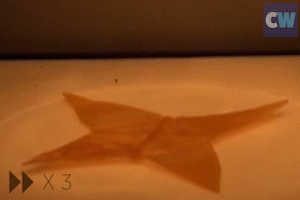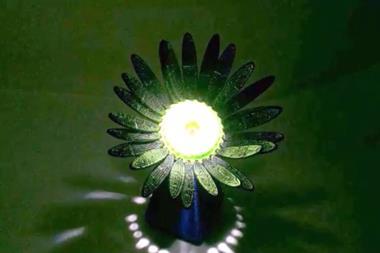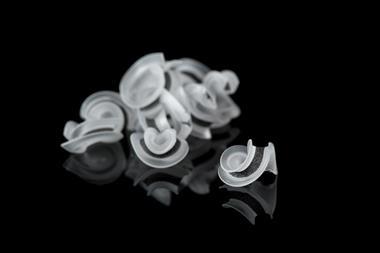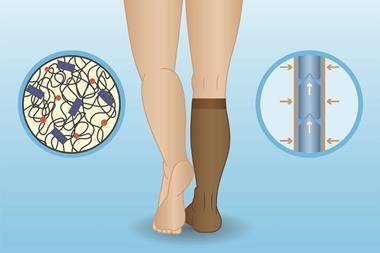Material can flip between shapes but its resting shape can be remodelled without wiping the memory of other shapes

Scientists in China have developed a shape memory polymer with a difference: the polymer’s permanent shape can be changed multiple times, with the features from the previous shape remaining locked into the structure. This means that increasingly complex morphologies can be sequentially built into the polymer – something that is not possible using a conventional mould. The researchers suggest that their new material could be useful for shape memory applications where especially intricate configurations and features might be needed, such as for medical devices.
Shape memory polymers are ‘elastic’, in that a temporary shape can be fixed and then the original shape recovered if a given stimulus is applied, such as heat. On the other hand, some polymers can be re-shaped permanently without melting through covalent bond exchange within the network. This is plastic deformation.
A team at Zhejiang University in Hangzhou led by Tao Xie has now developed a polymer capable of elastic deformation at the relatively low transition temperature of 55°C, and plastic deformation at a much higher temperature at around 130°C. The polymer consists of a crosslinked poly(caprolactone), which has elastic shape memory properties. The team incorporated into the network 1,5,7-triazabicyclo[4.4.0]dec-5-ene, which catalyses transesterification within the polymer at the higher temperatures, locking the polymer into a permanent new shape.
The team showed that it was possible to make complex geometric shapes from the polymer and fix these permanently through plastic deformation. These can be re-shaped at the lower, elastic temperature and then recovered to the original shape upon heating. In addition it is possible to make multiple, sequential plastic deformations of the polymer. Each feature of the deformation, for example introducing surface patterns, is carried on to the subsequent shape. Each of the shapes in the sequence are themselves elastically recoverable.
‘The technique does not rely on a mould, thus the complexity of the shape is not limited by the mould,’ Xie says. ‘Also, sequential plastic deformation is not possible with a thermoplastic polymer. As you remould a thermoplastic polymer, its previous permanent shape is erased completely, but not with our concept. Since plastic deformation is cumulative and can be repeatedly conducted, one can view the new material as a live, or dynamic, material instead of dead, or static.’

Mitchell Anthamatten, a shape memory polymer scientist at the University of Rochester in the US, describes the new material as ‘an elegant example of a shape memory polymer with a “permanent” shape that can be adjusted simply by heating’. He adds: ‘This ability to tweak the end-point of the shape–memory cycle could enable much more customisable and individualised applications of shape–memory materials.’
Huang Weimin of Nanyang Technological University in Singapore says: ‘I am afraid that I am not convinced that this work is a big surprise. Similar results have been observed/reported before, but mostly we try to avoid or minimise such, for a higher shape recovery ratio.’ He adds: ‘The novelty of this paper is to bring this phenomenon to our attention, and utilise it as an alternative to re-fix the permanent shape again and again. We have seen similar phenomenon, but mostly less effective, in some commercial polymers, and wonder why? The excellent contribution of this work is to clearly reveal the fundaments of a possible approach.’
References
Q Zhao et al, Sci. Adv., 2016, 2, e1501297 (DOI: 10.1126/sciadv.1501297)












No comments yet